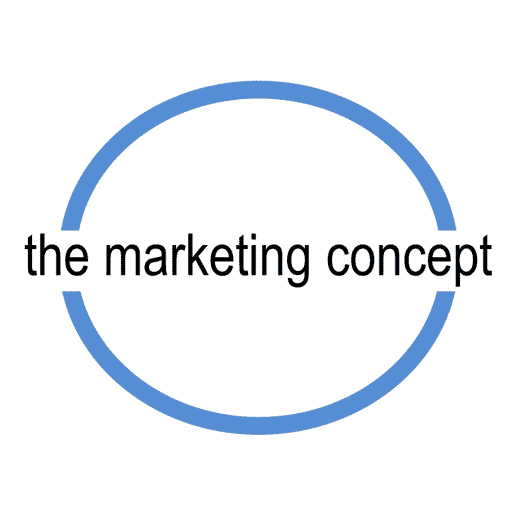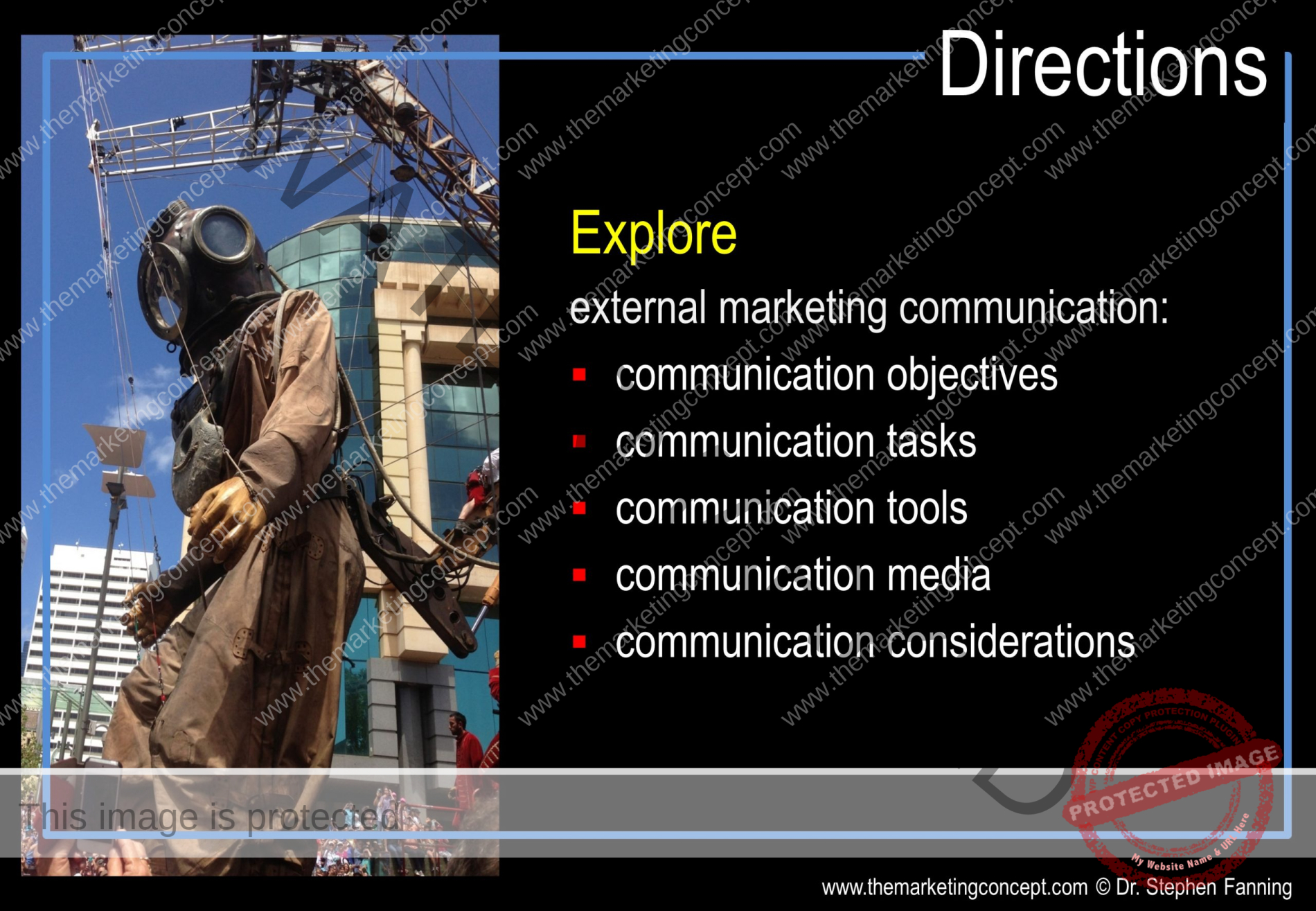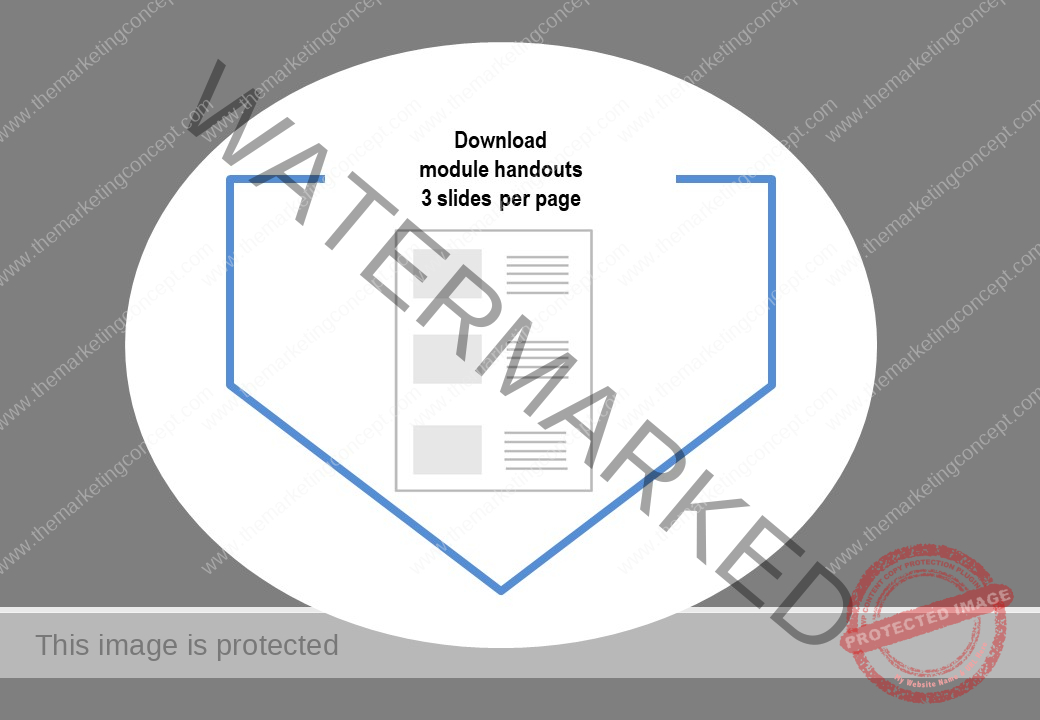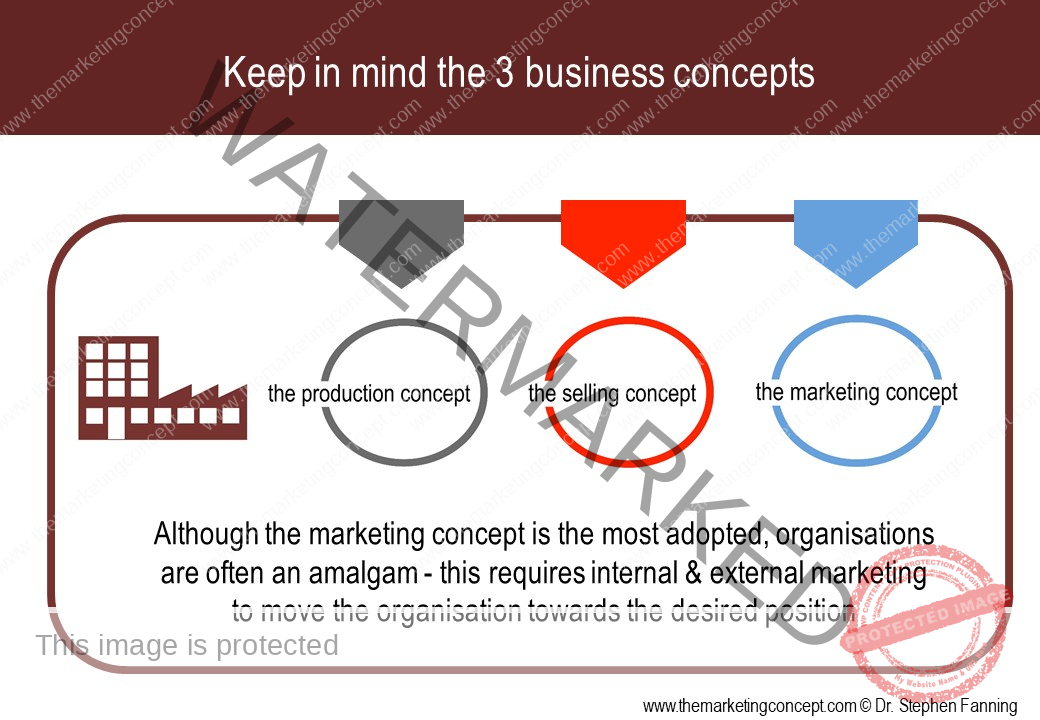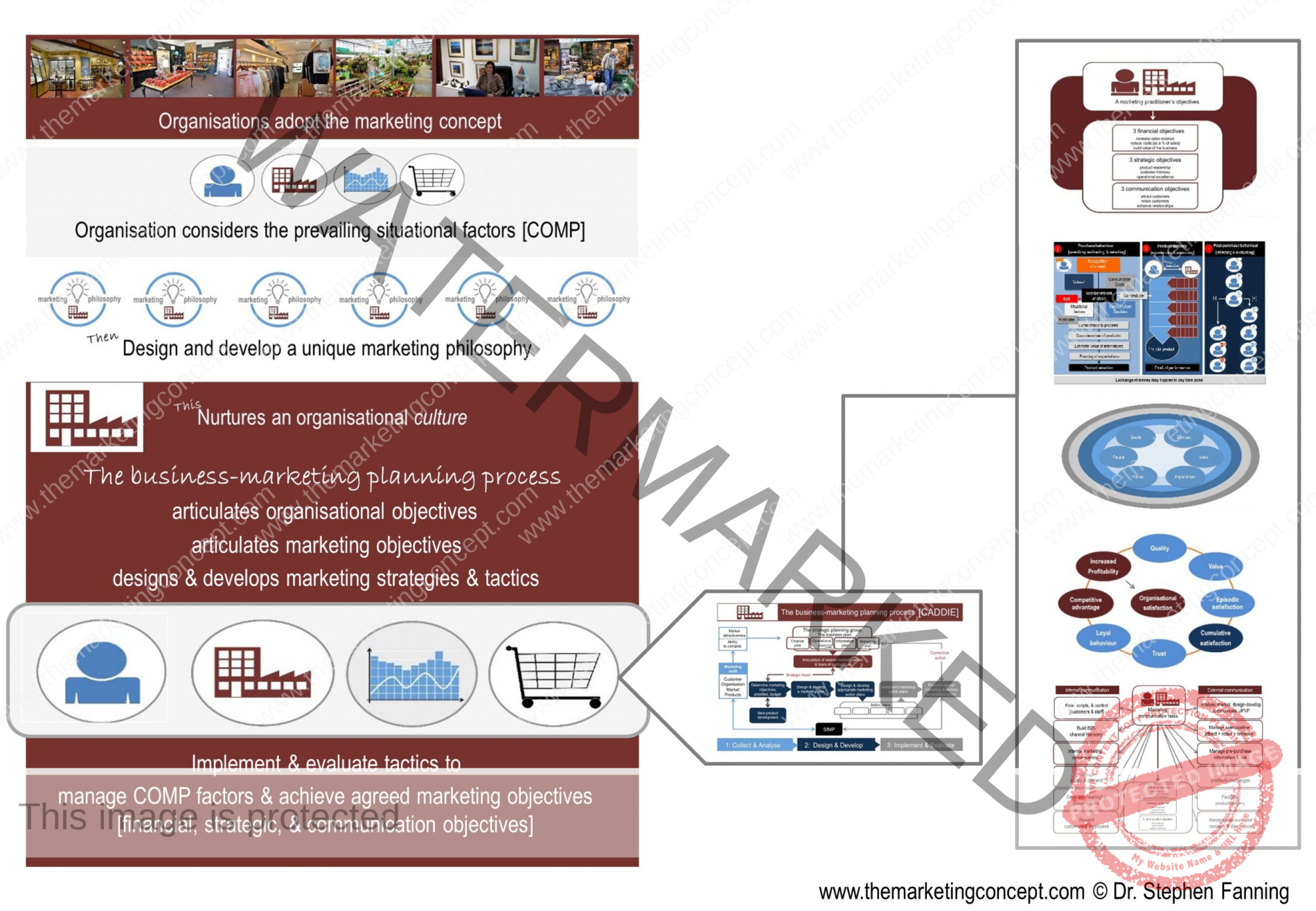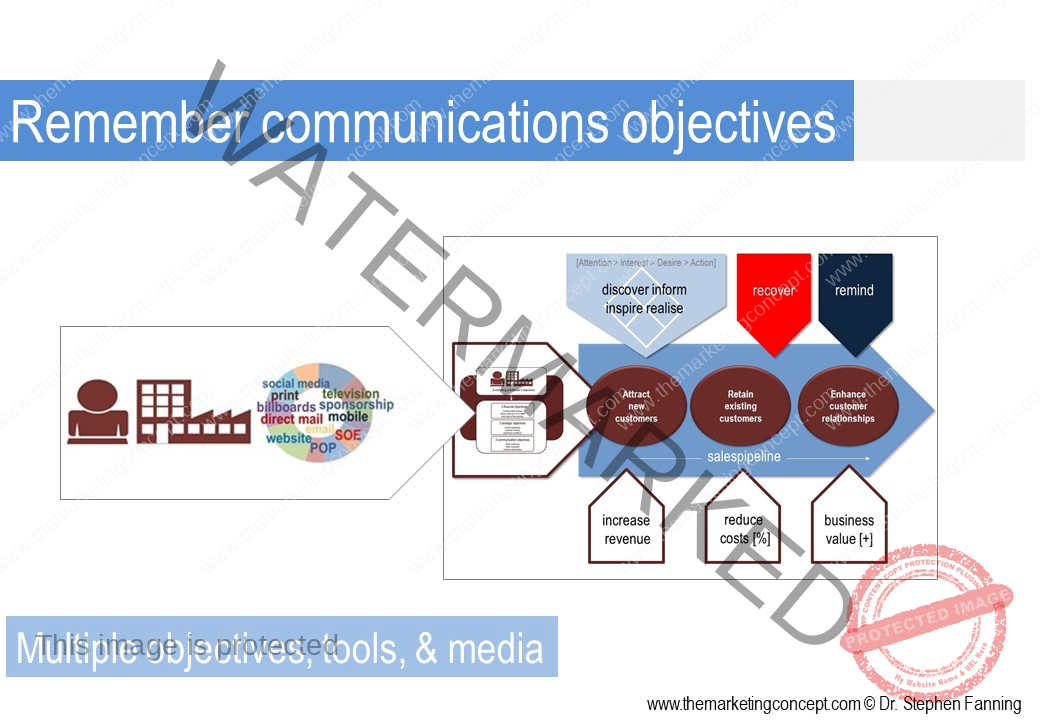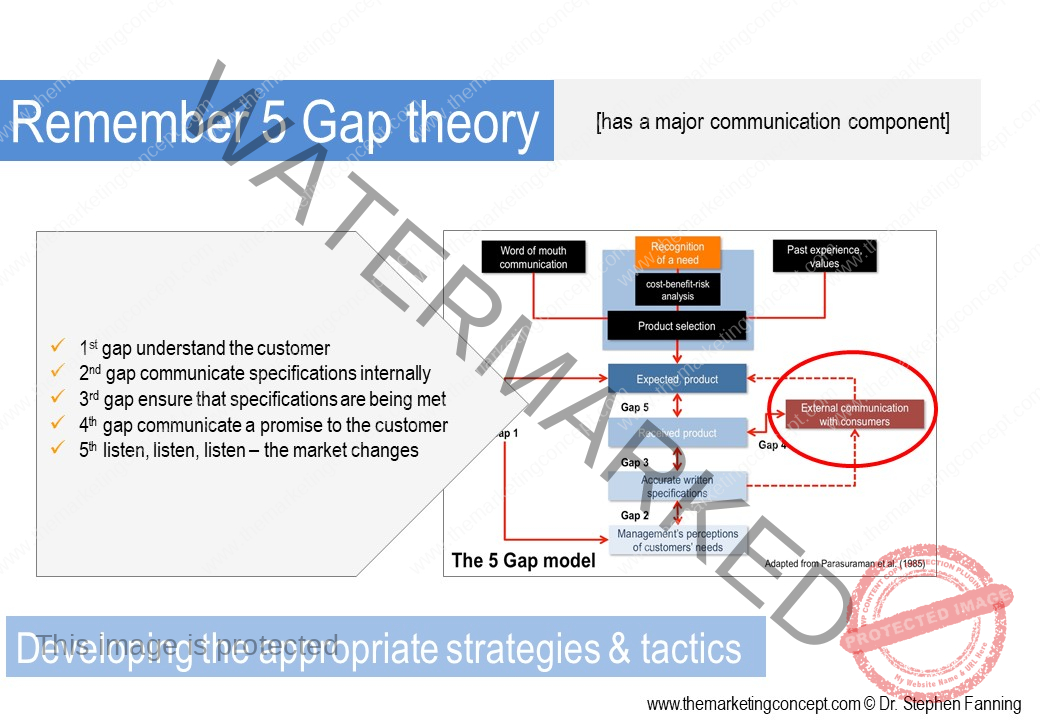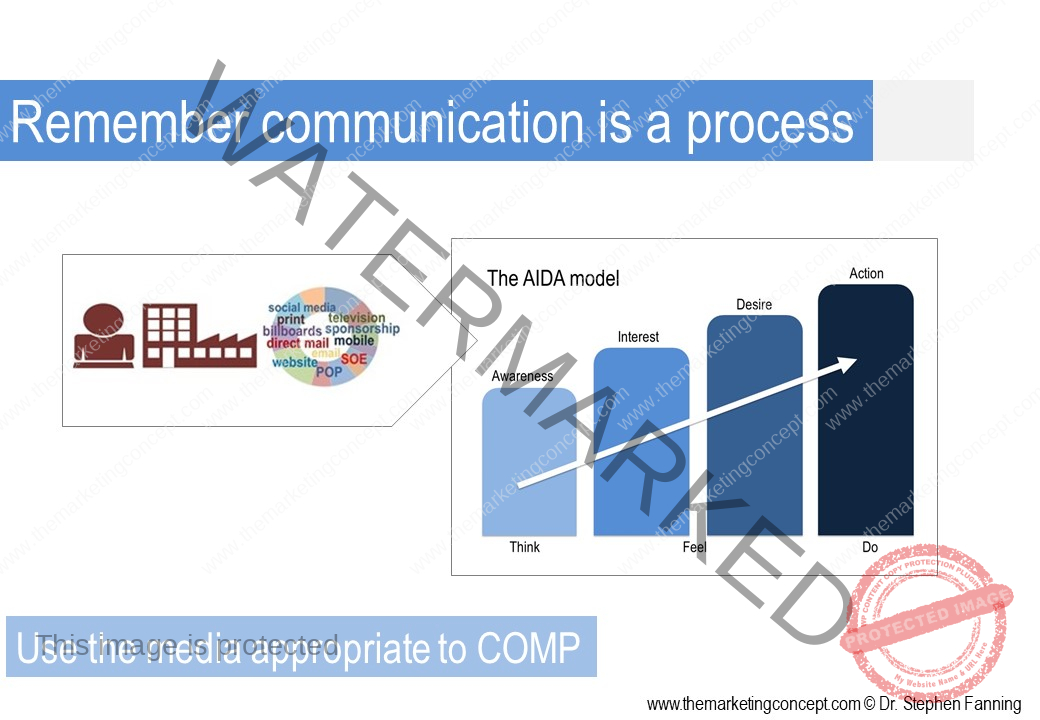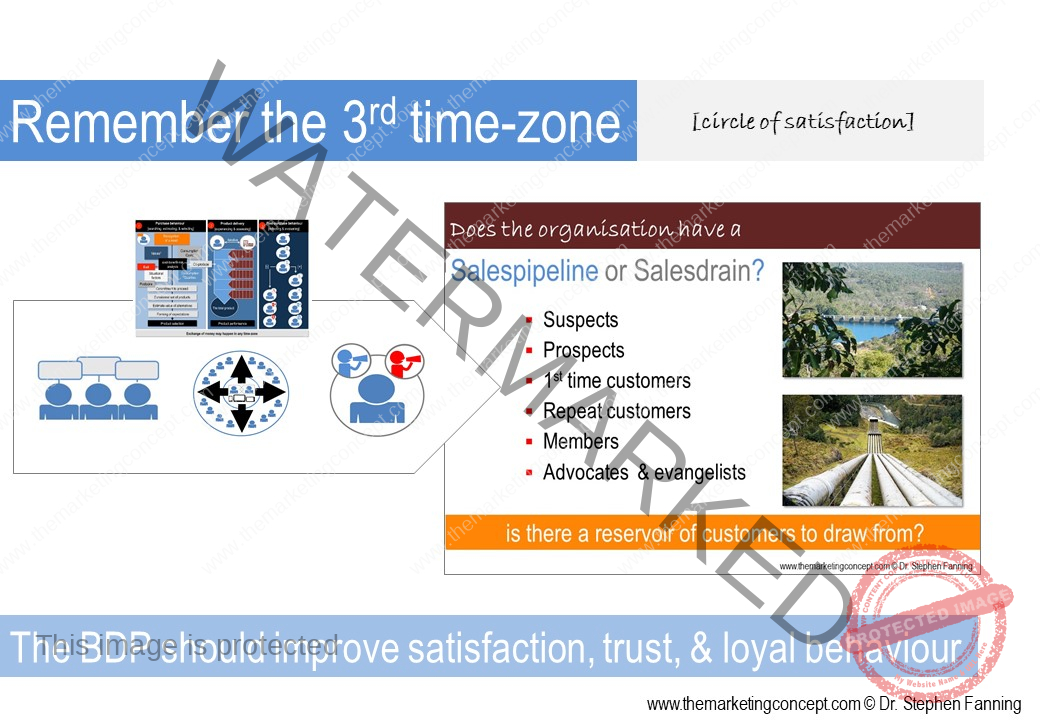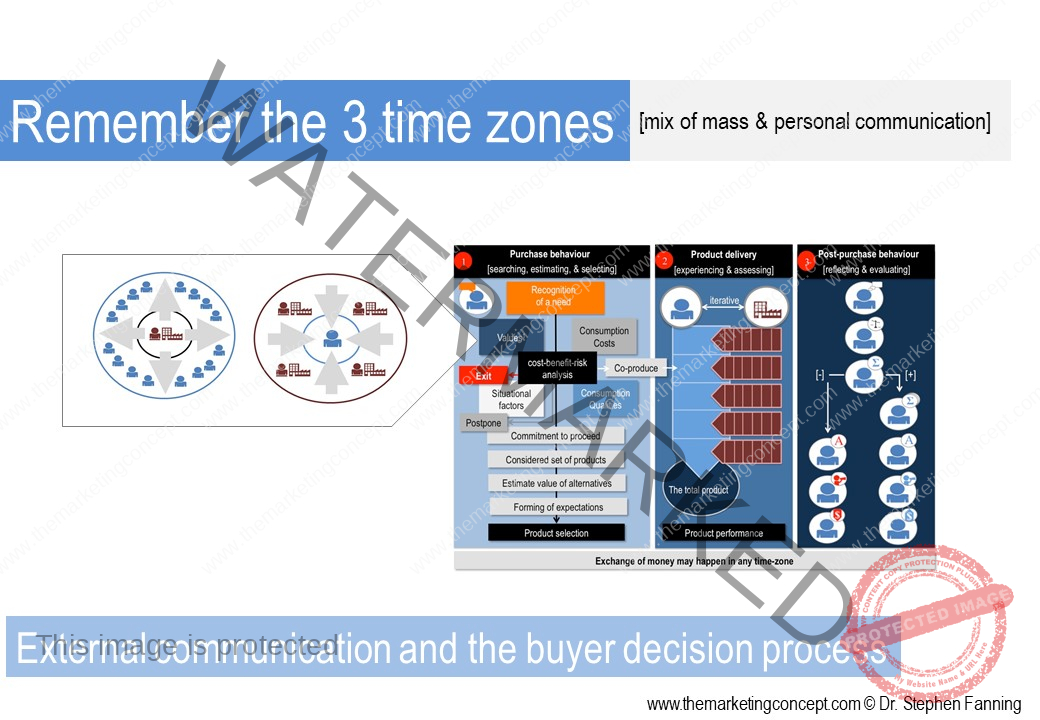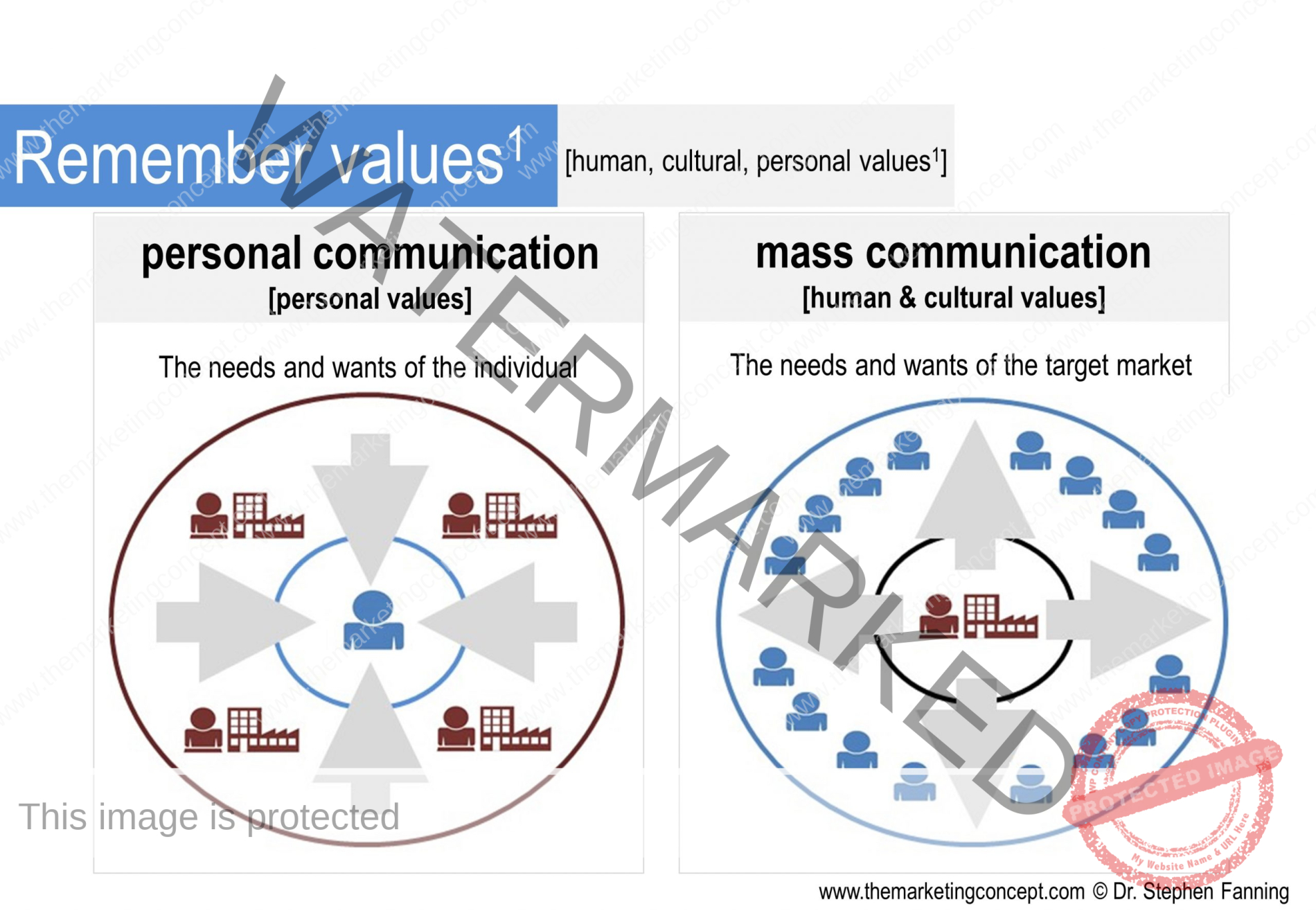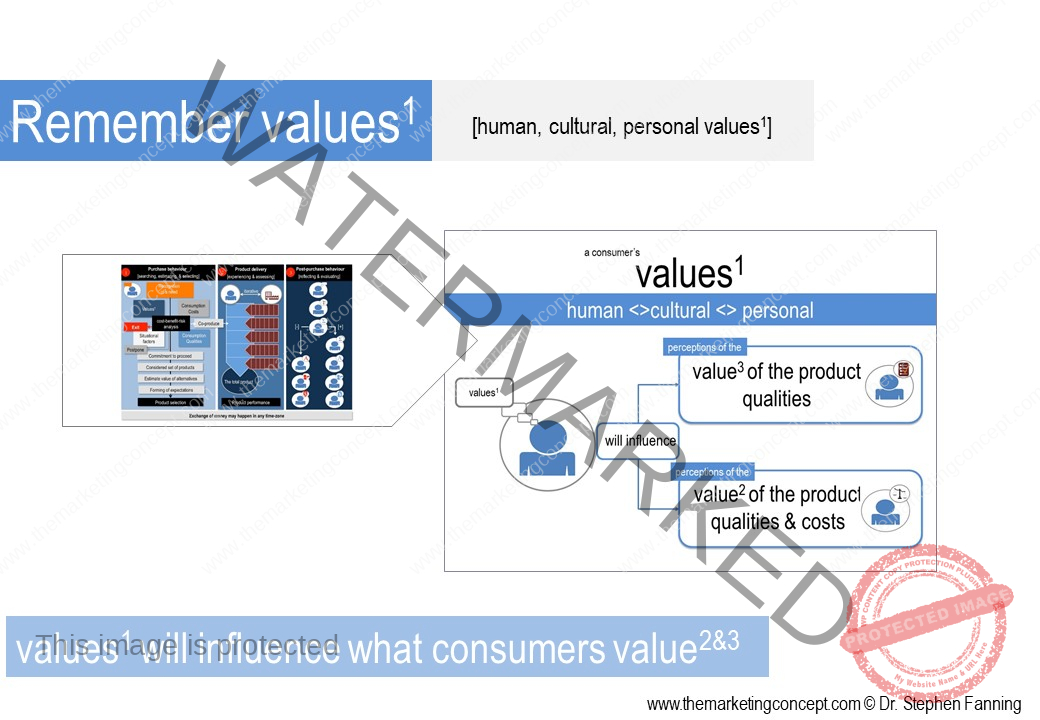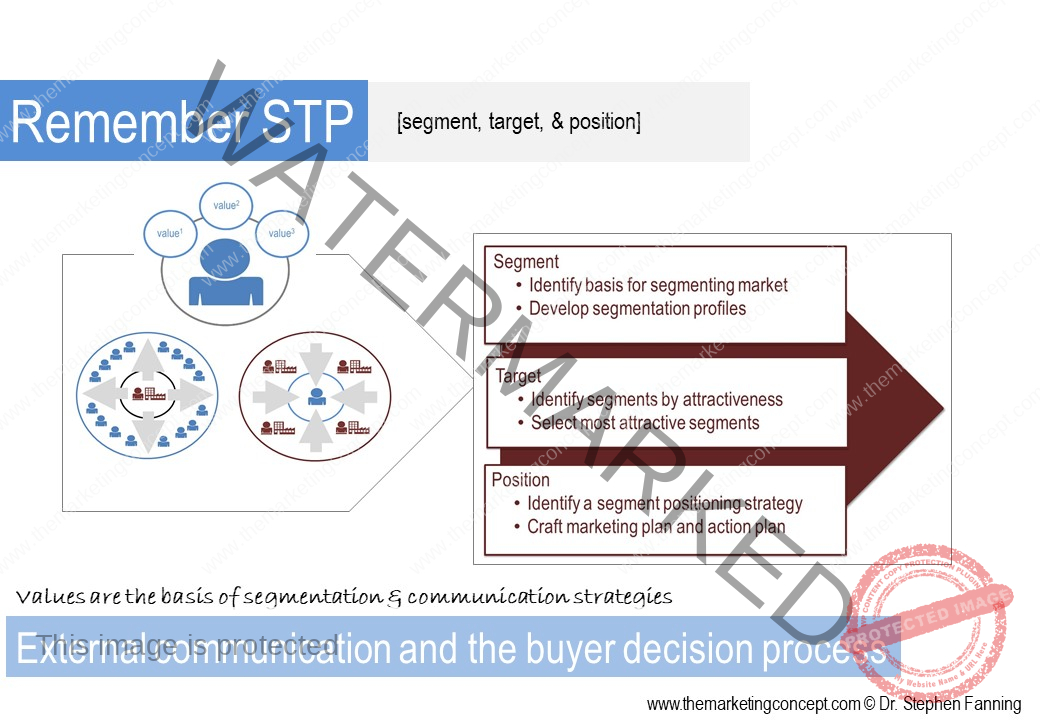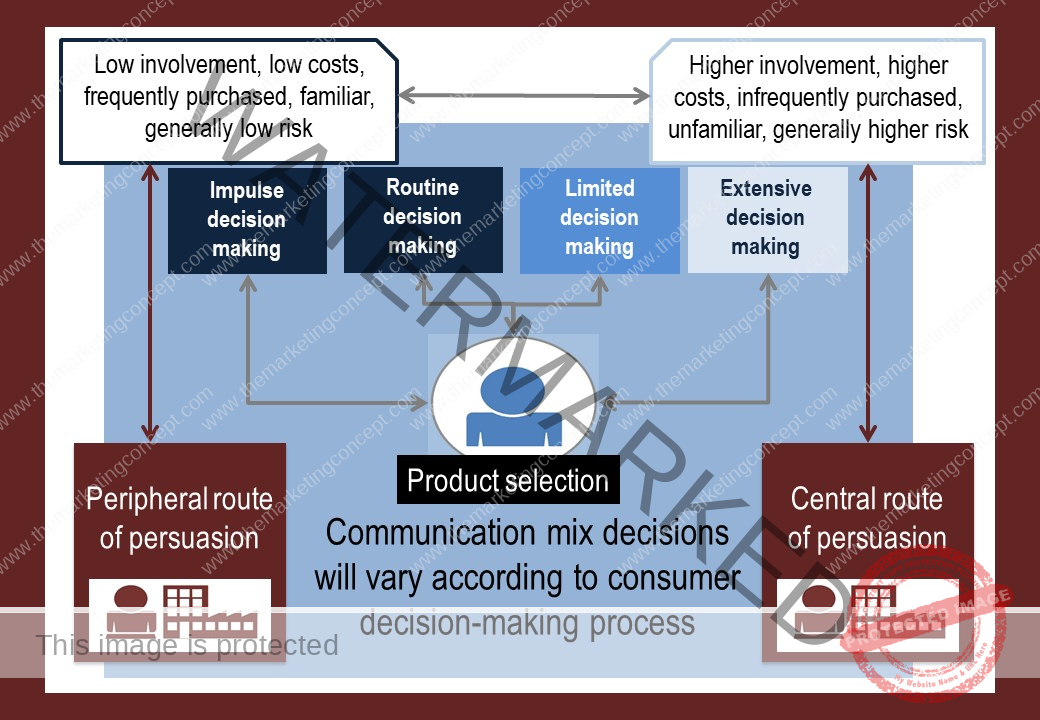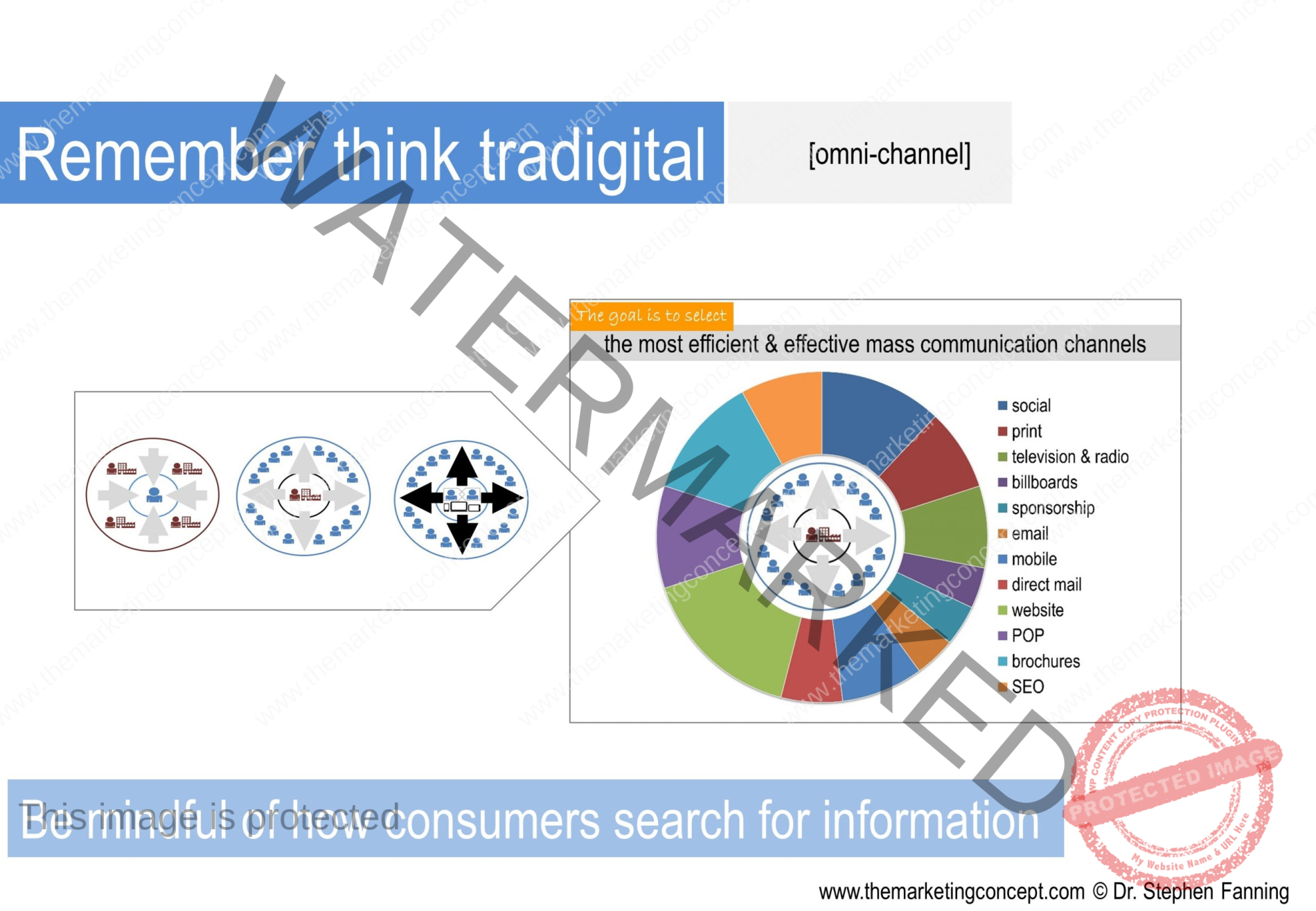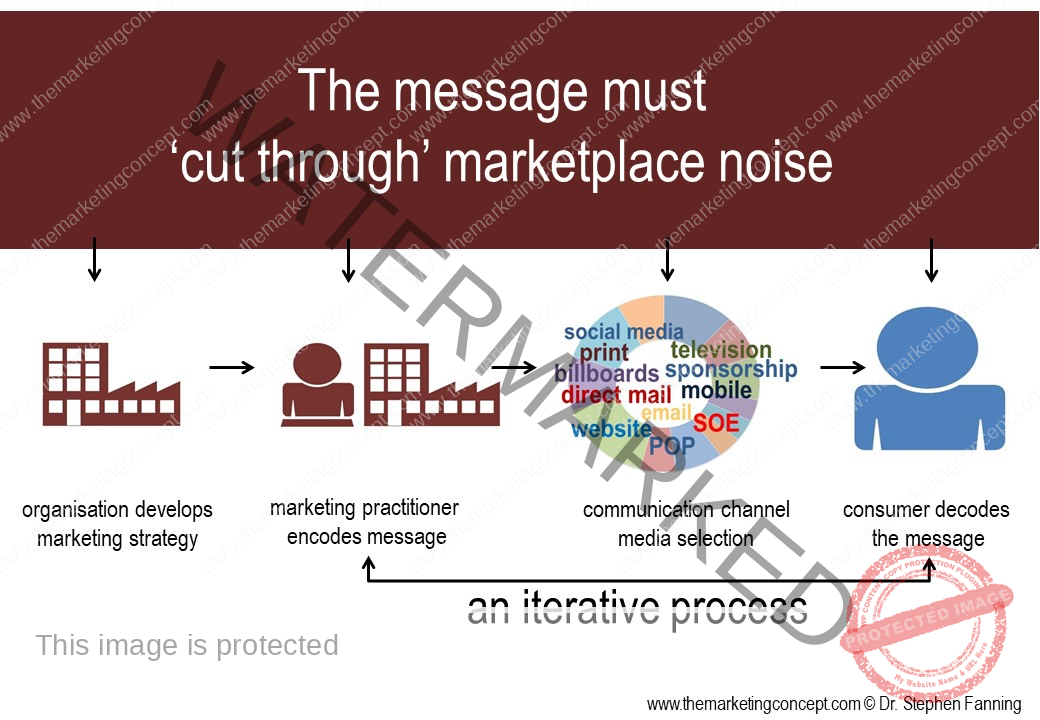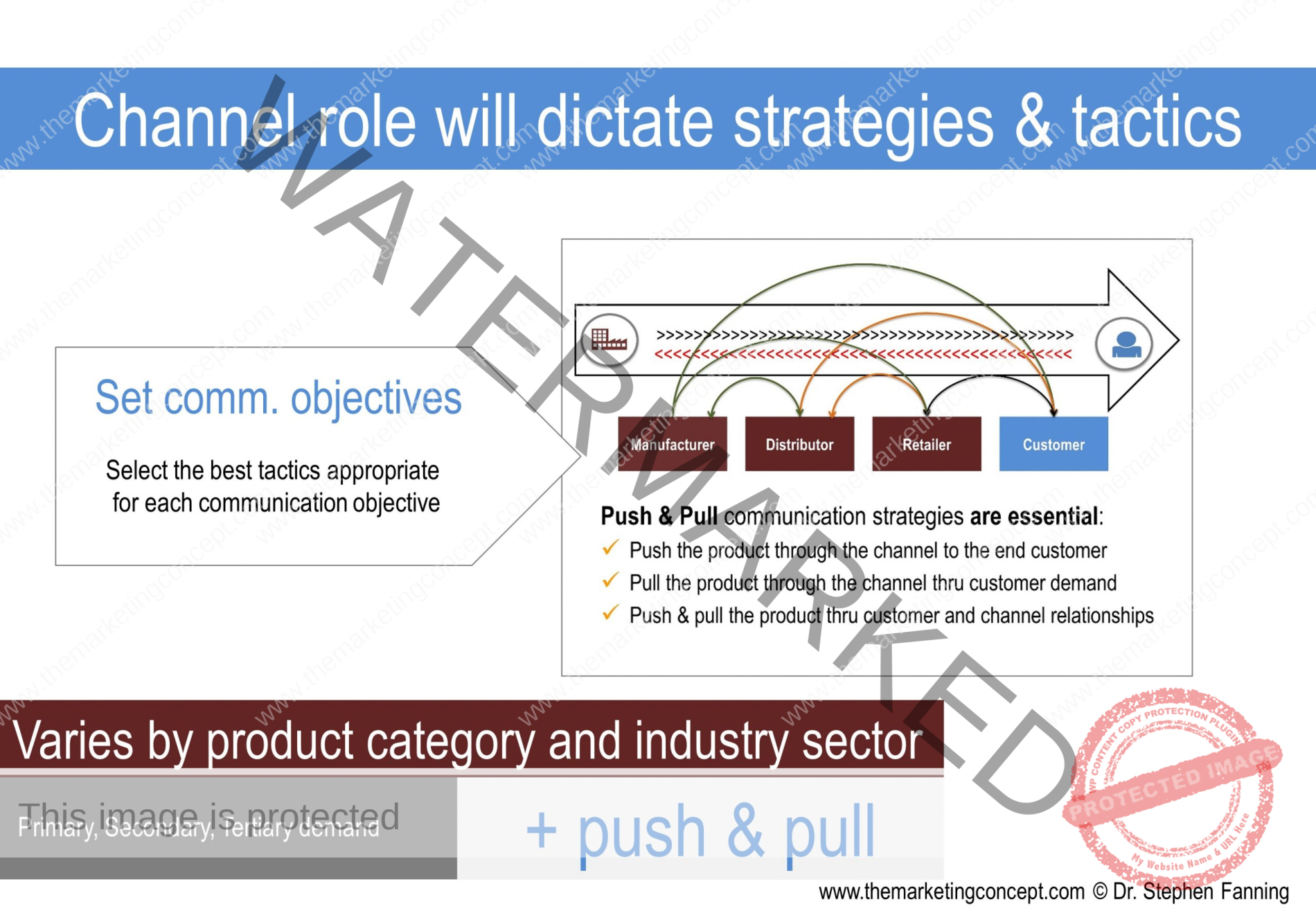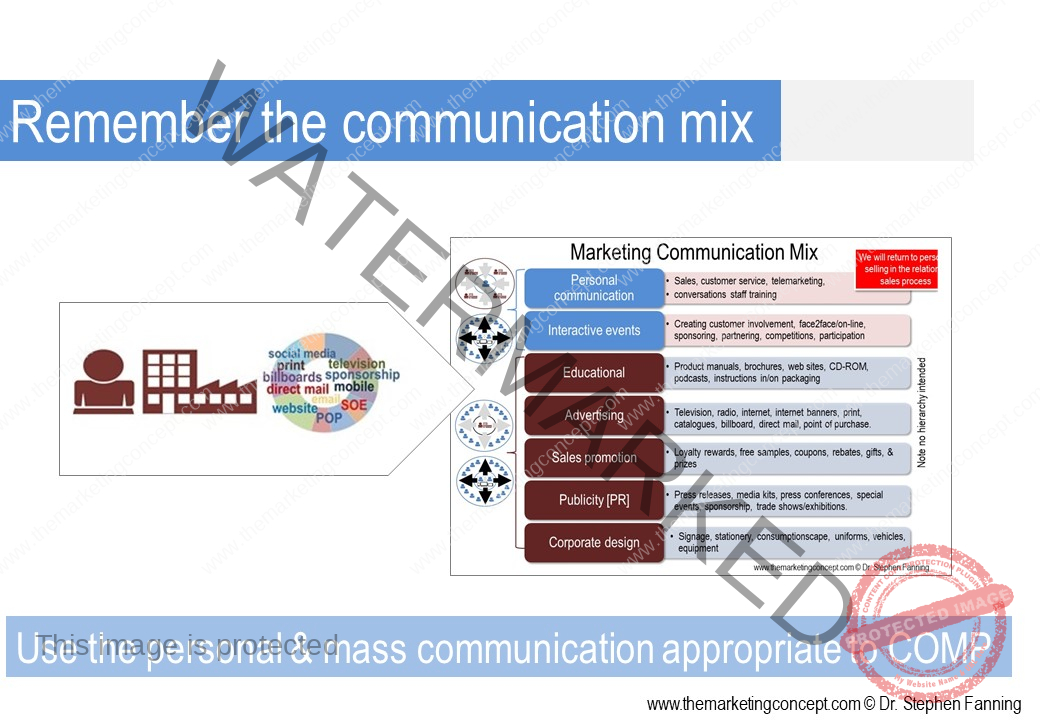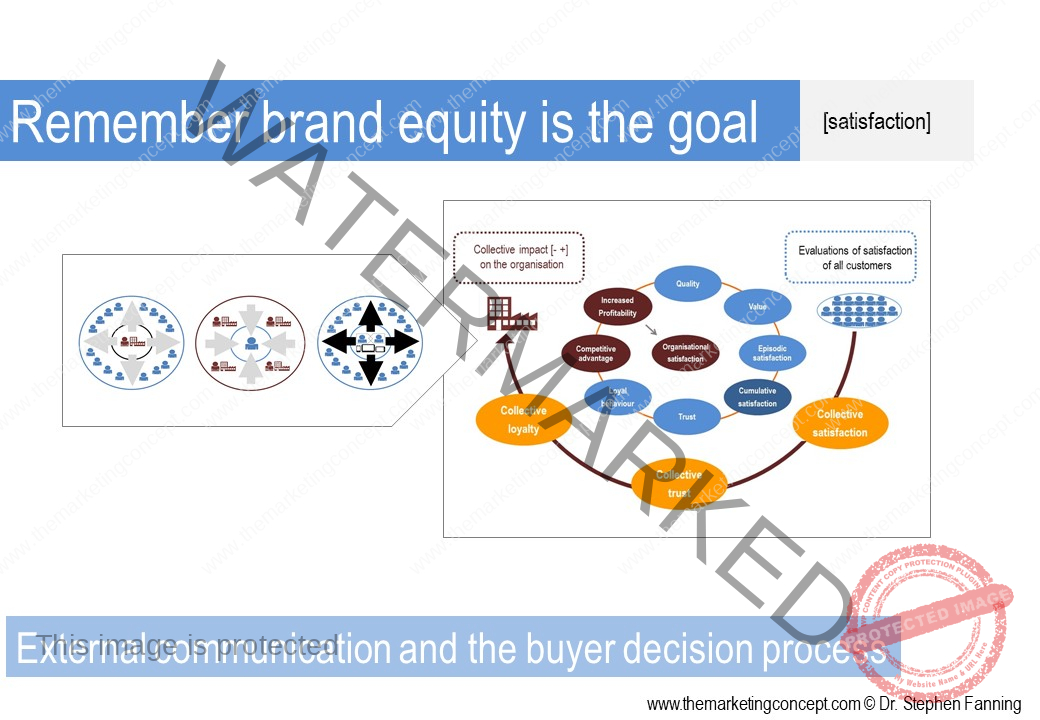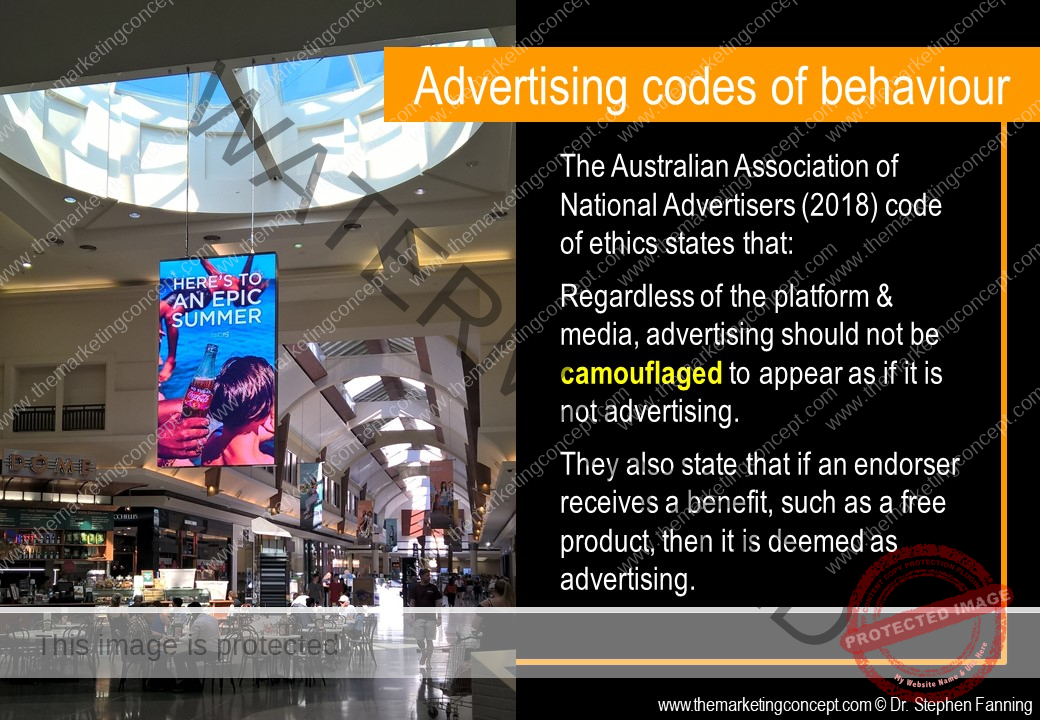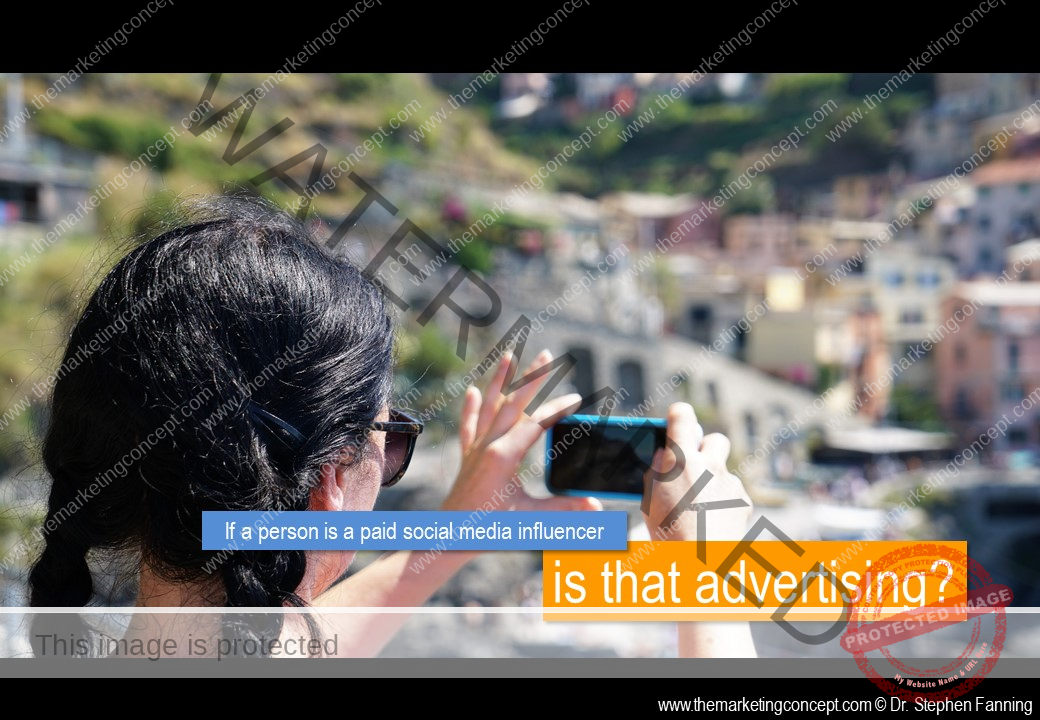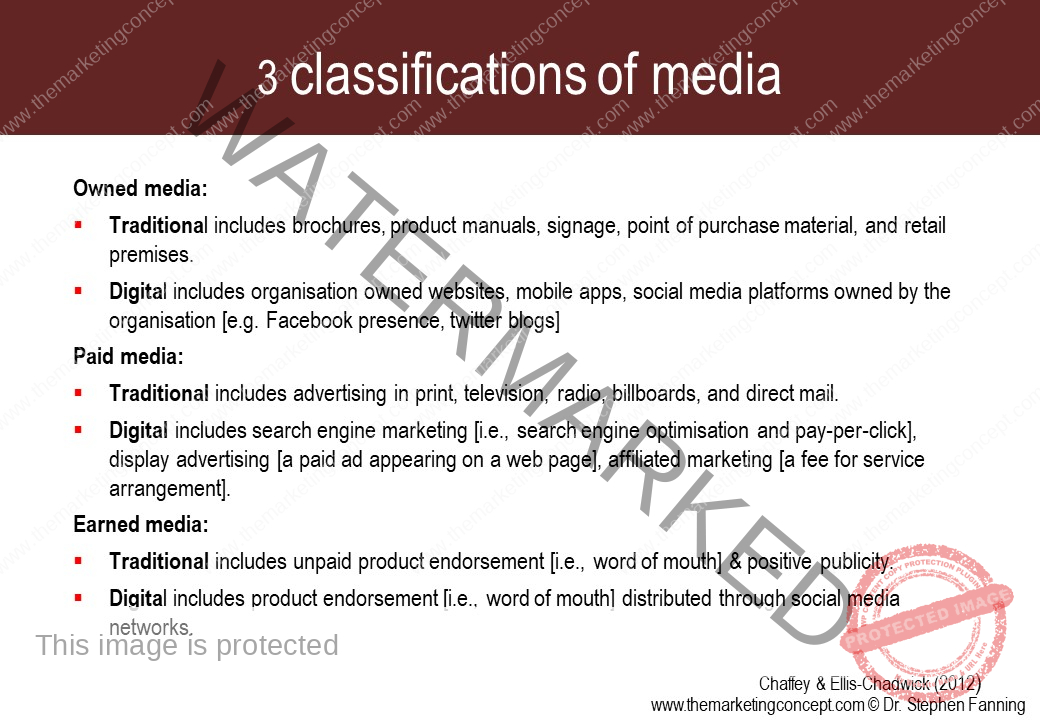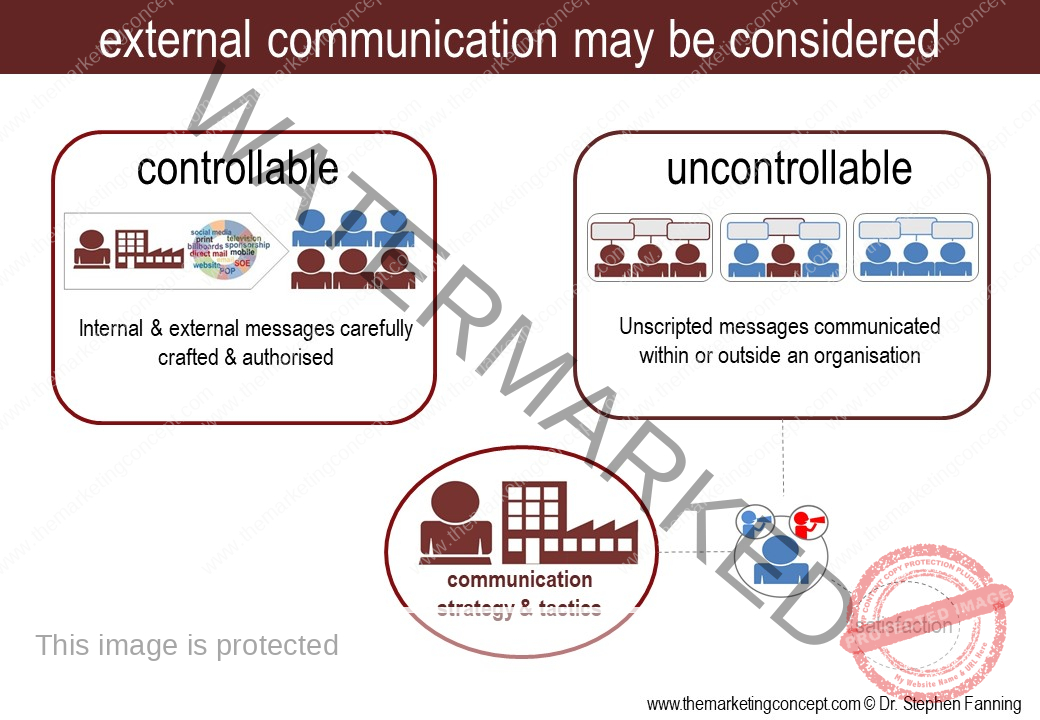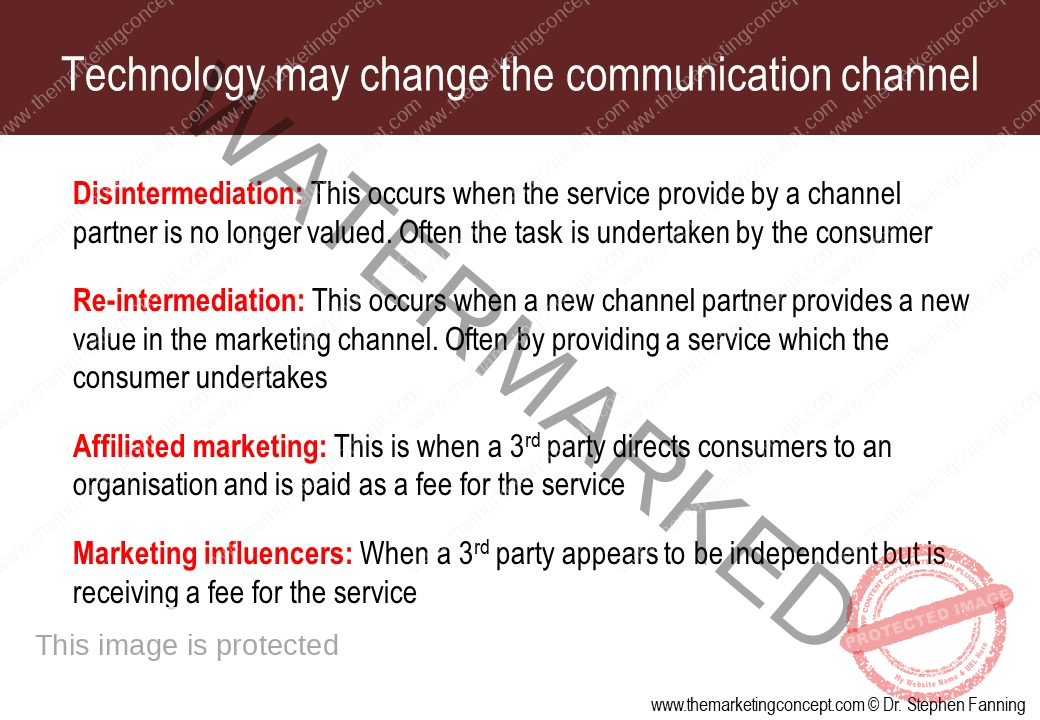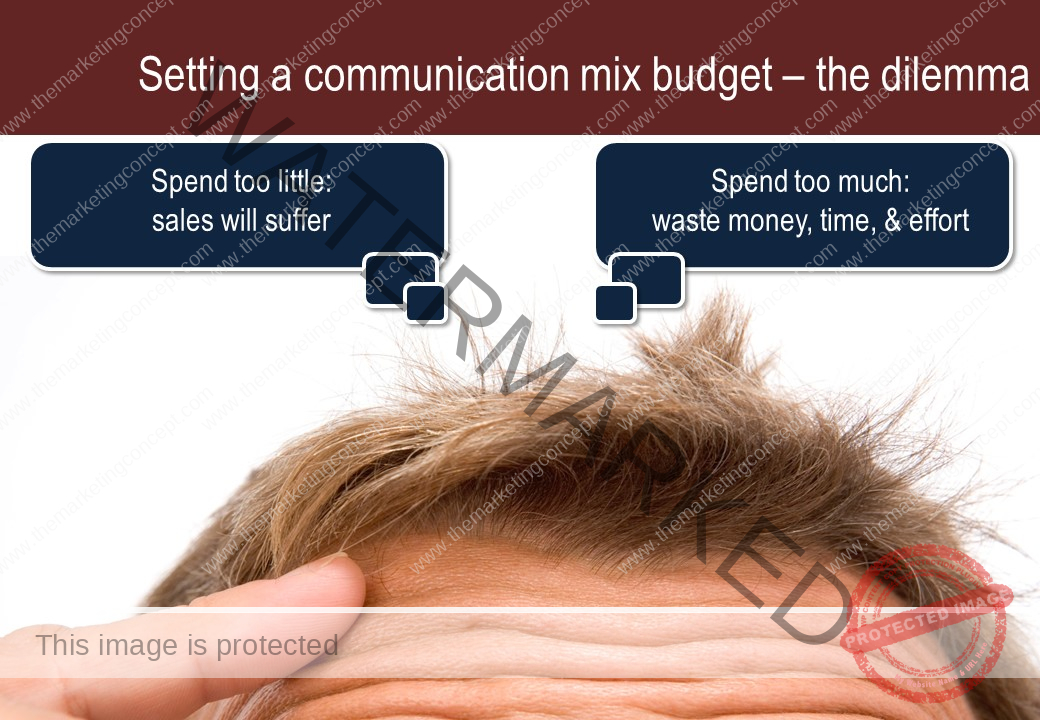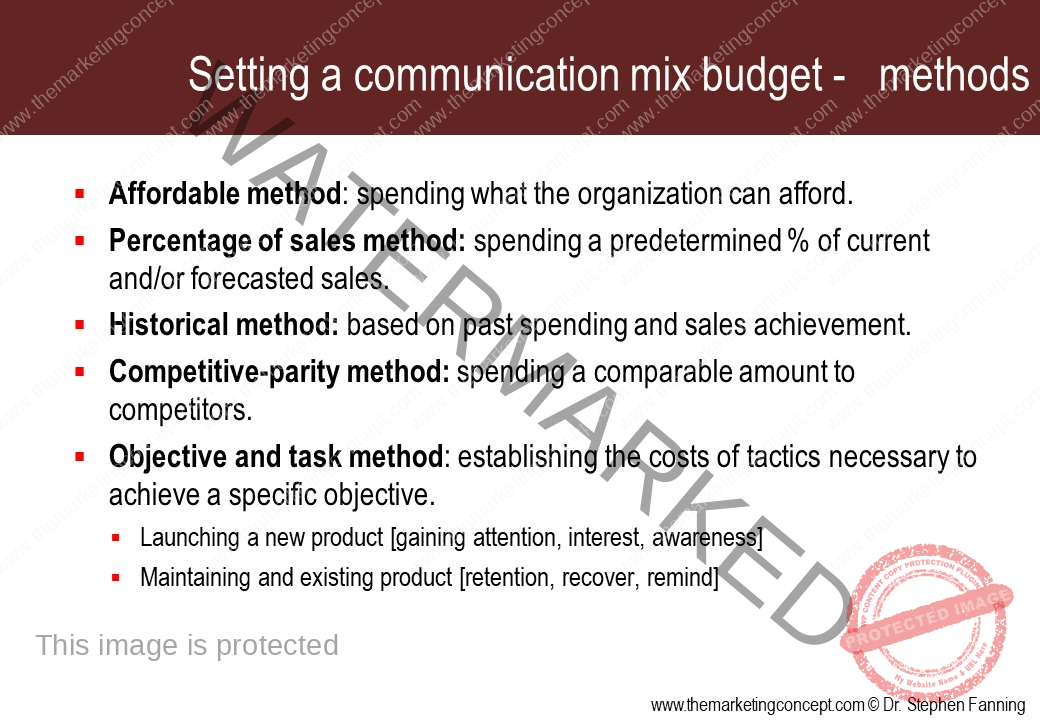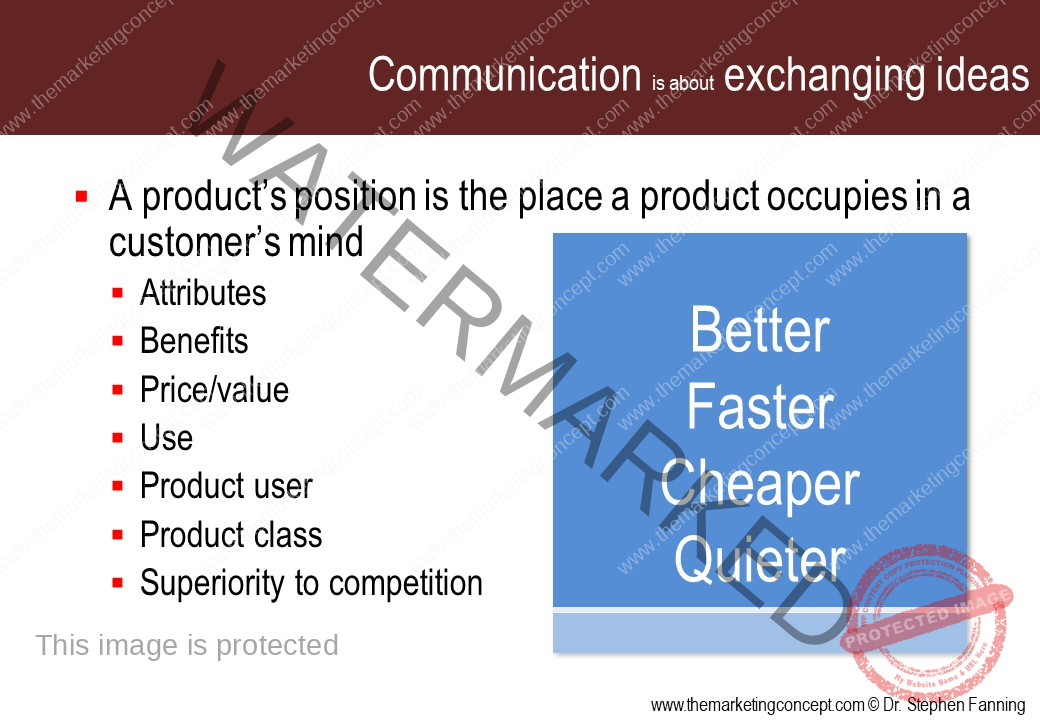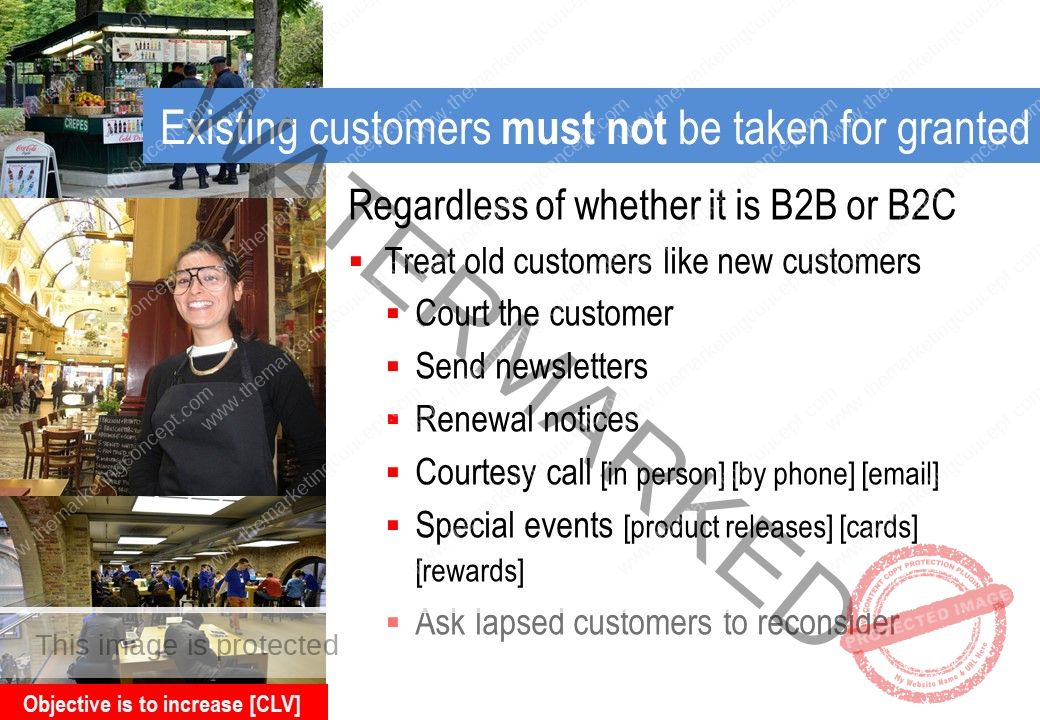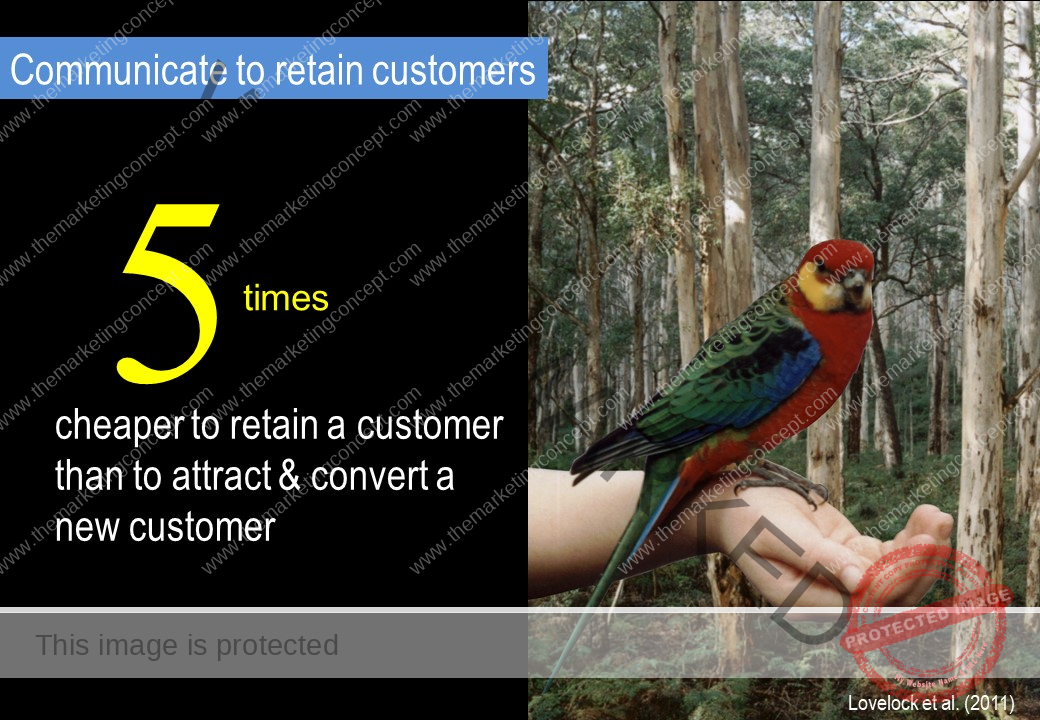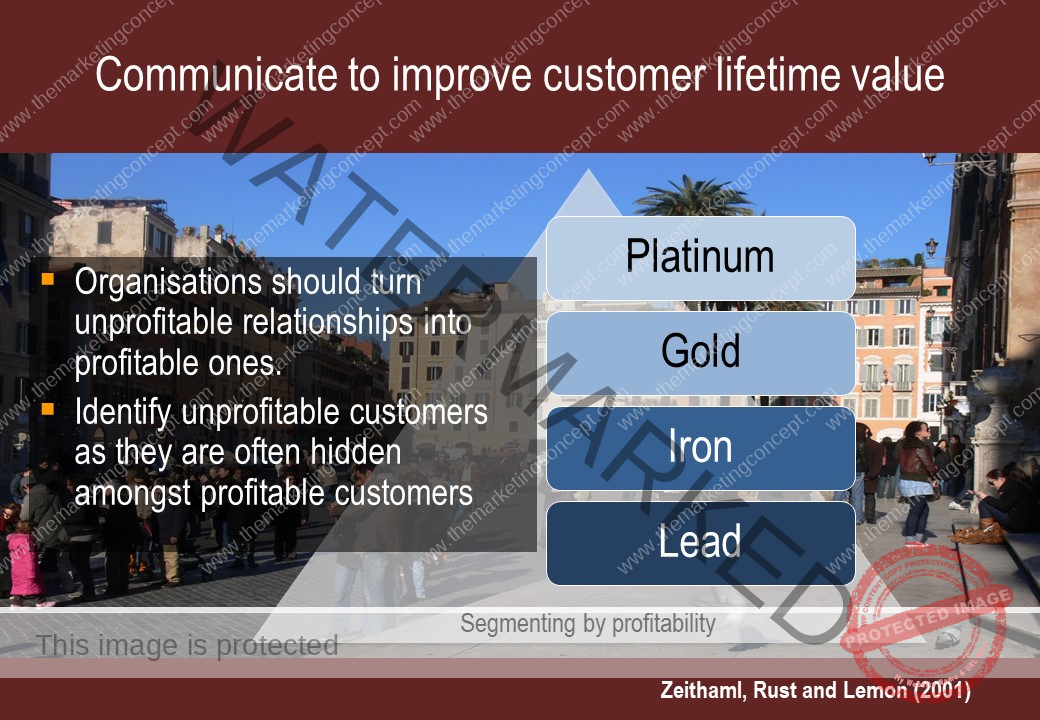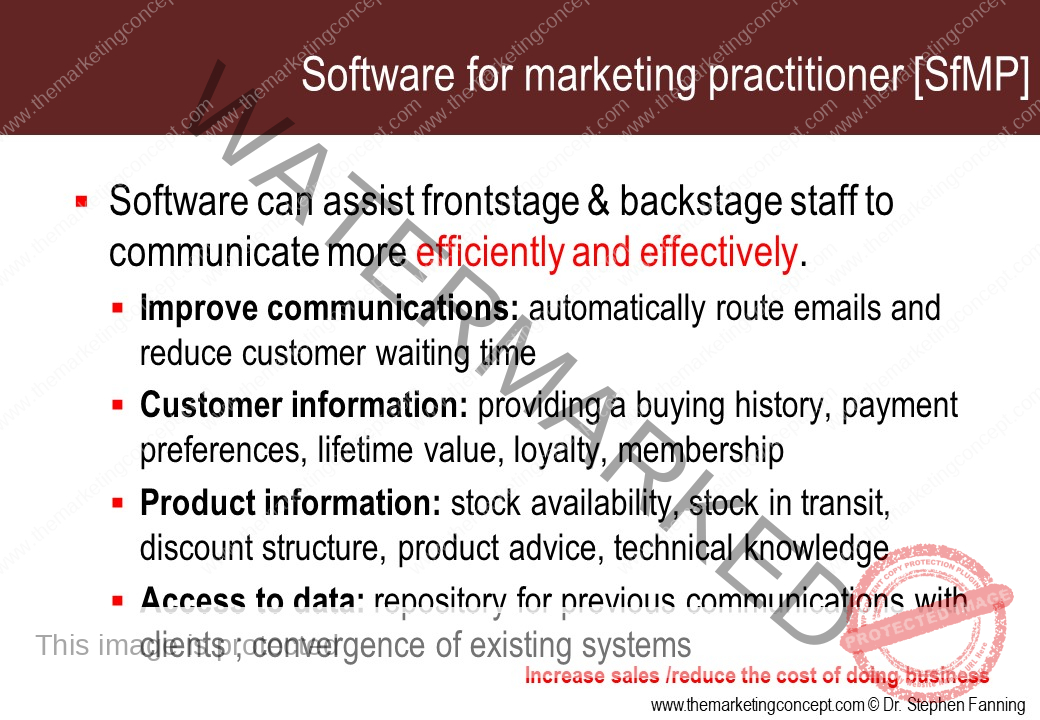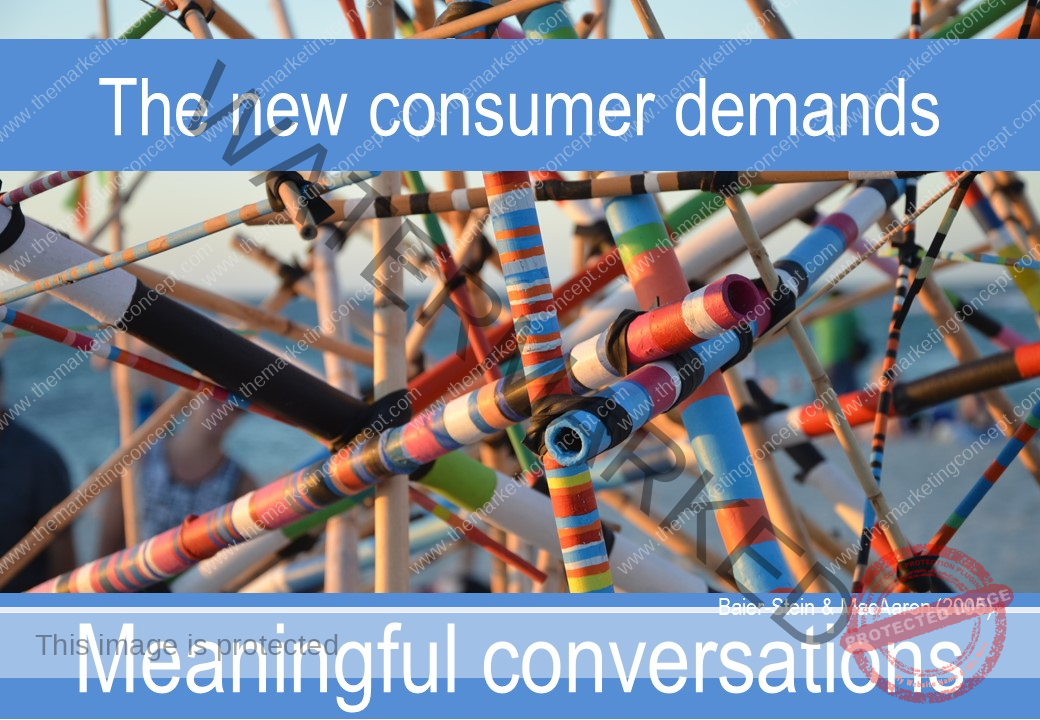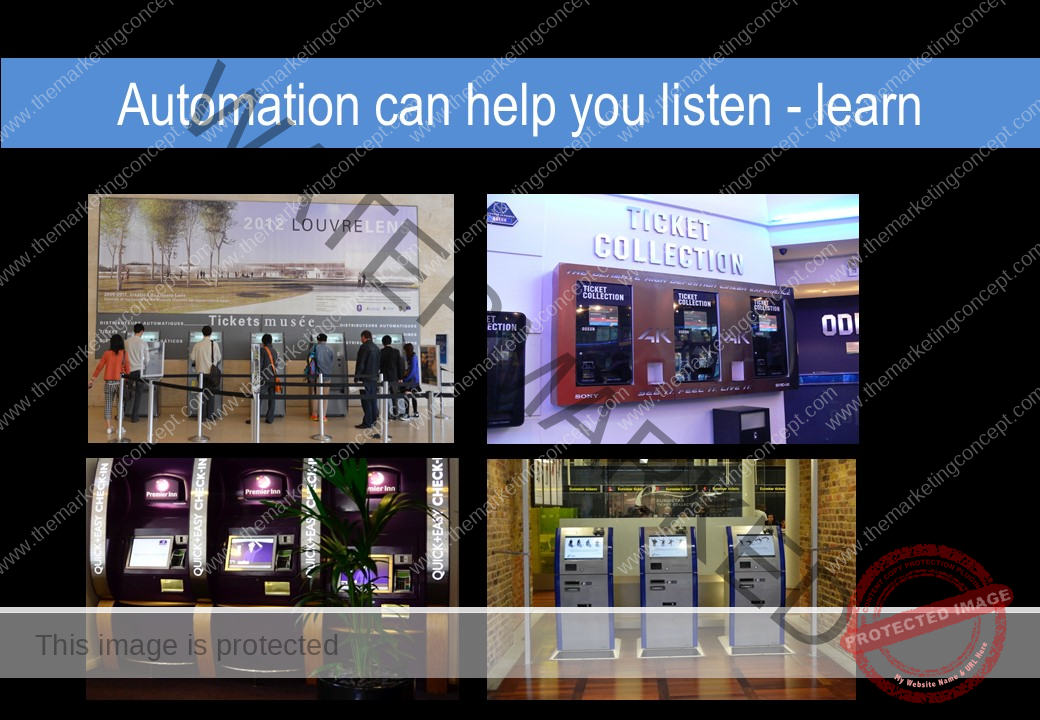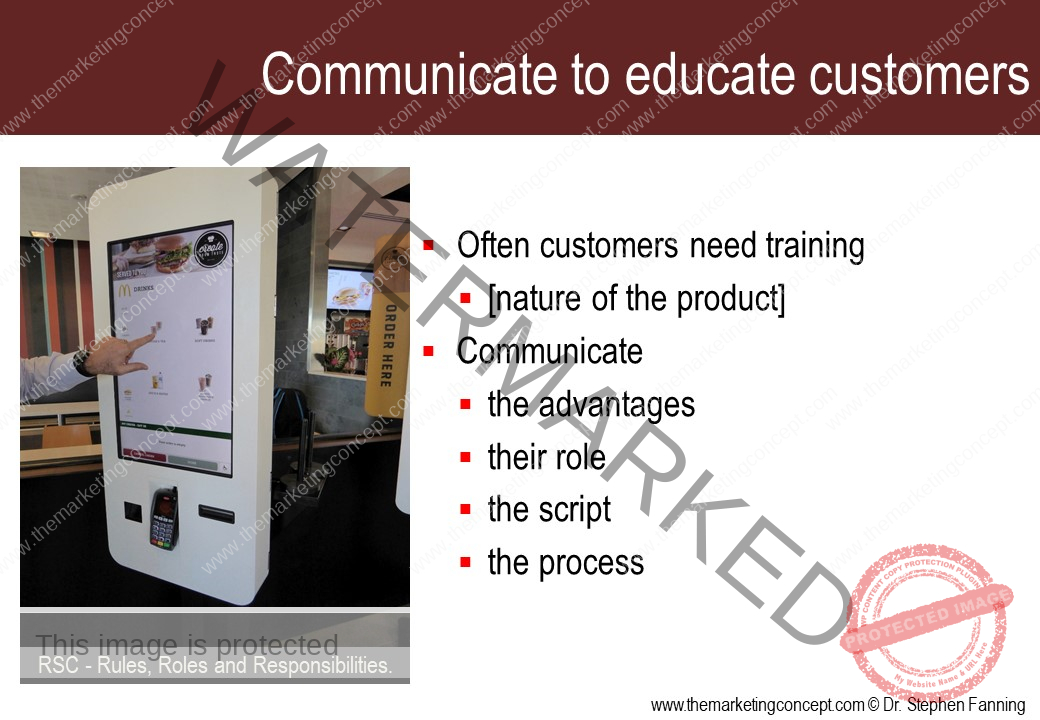3:3:5 marketing action plan [external marketing]
Previously we have discussed that organisations practice a marketing philosophy to achieve the three marketing [financial] objectives: Increasing revenue, reducing costs as a percentage of sales, and building the value of the business.
At an holistic level ‘communication’ is involved in all marketing activities and the achievement of the marketing objectives. Although it is possible to achieve one marketing objective independent of the others [e.g., increase sales revenue through discounting] it is only possible to achieve all three marketing [financial] objectives through the creation of profitable4 exchange relationships4 with customers, channel partners and society. We have also discussed how a competitive advantage is achieved through a loyalty ‘service’ from customers and this requires a communication process of managing quality, value, satisfaction, cumulative satisfaction, and trust.
The above PDFs provide an overview of topics that we have discussed and how the topics relate to communication. You could come to the conclusion that we have been leading up to this point for some time.
External communication objectives
Percy and Rosenbaum-Elliott (2012) state that by exploring the Latin origins of the words advertising and promotion we can better understand the correct meanings and when to employ them appropriately. They state that advertising should be directed towards creating a positive attitude towards a product [and long-term through the product to the brand] whereas promotion should be directed towards motivating the consumer to trial the product and/or enter an exchange – in the immediate future. They state that advertising is long-term and more aligned with strategic communication objectives and promotion is short-term and more aligned with tactical sales objectives. Throughout the e-book, we have stated that marketing strategy and tactics should be complementary and congruent; this also applies to advertising and promotion. Sometimes the line between advertising and promotion is a little blurred; for example, when retailers promote goods in their advertising. The retailer may promote a manufacturer’s product/brand and the manufacturer contributes to the cost of the catalogue or television commercial. The retailer may have a number of similar promotions throughout the year and when combined communicate a strategic position for the retailer.
It is perhaps stating the obvious; communication efforts must be directed towards achieving the organisational objectives. Therefore, it is important for organisations to define communication goals across all areas of the communication mix. Some goals may be broad and long-term whereas as others are short-term and specific. A number of businesses consultants argue that goals should be SMART – specific, measurable, attainable, realistic, and time-based and this useful acronym applies to communication objectives. Let us explore some communication objectives.
- Lovelock et al. (2011) emphasise the importance of communication objectives:
- Creating and communicating memorable images
- Building awareness and interest
- Stimulating trial
- Communicating product strengths & benefits
- Manage supply V demand
- Providing reassurance, reducing risk & dissonance
- Rewarding customers and/or employees
- Repositioning a product
- Palmer (2001) includes some of the above however, puts forward the following communication objectives:
- Influencing the purchase decision
- Building a positive image
- Distinguishing the product
- Reminding of the existence
Previously, we have stated that the three marketing financial objectives of increasing revenue, reducing costs as a % of sales, and building the value of the business all have communication as a central component. Furthermore, to achieve all three goals organisations must attract, retain, and enhance the relationship4 with customers.
Attracting customers and populating the salespipeline becomes an important first step. The attraction stage is where consumers evolve into suspects, evolve into prospects and evolve into customers; they become aware of the product and enter the buyer decision process.
Depending on the size of the organisation the planning and execution process will involve a number of people from within the organisation [see activity four friends from uni catch up]; however, some specialised activities may be outsourced. Product variables, such as whether it is a new or existing product, will also impact on the process.
- The following broad planning and execution steps are generally presented in marketing texts – you will notice how many of these steps go beyond the communication strategy:
- Identify the market segments
- Identify the most attractive segments
- Set communication objectives [SMART]
- Determine a communication budget
- Redefine communication objectives [if needed]
- Determine objectives for personal communication
- Determine objectives for mass communication
- Determine most effective creative service agencies, media and tools
- Craft messages to gain attention, interest, desire, and motivate the consumer to take action [AIDA]
- Evaluate performance against objectives
The key task for marketing managers is to ensure that external communication tactics are not locked into the thinking of the past. In recent years, marketing communication is presented as an iterative process and one that incorporates all communication activities – communication originating inside the organisation and communication originating outside the organisation. Marketing communication involves external customers, internal customers, channel partners, and the communities [peer to peer] in which the business operates.
Although most business people are aware of the role that marketing plays in communicating with external customers, many business people are often unsure of the role that marketing plays in communicating with internal customers and channel partners. Communicating with internal customers and channel partners is generally referred to as internal marketing and plays an important role in adapting an organisation to an evolving marketplace. We can see that marketing communication is about listening and understanding the customer and then communicating throughout the organisation and adapting the organisation. A neglect of internal marketing will result in poorly trained employees, disenfranchised employees, neglected customers, clumsy implementation of strategy, and lower probability of meeting organisational objectives.
We have also presented the view that by focussing on customer satisfaction an organisation will reduce negative word within non-controllable communication. This is in keeping with the marketing concept. Clearly, communication is central to every aspect of marketing
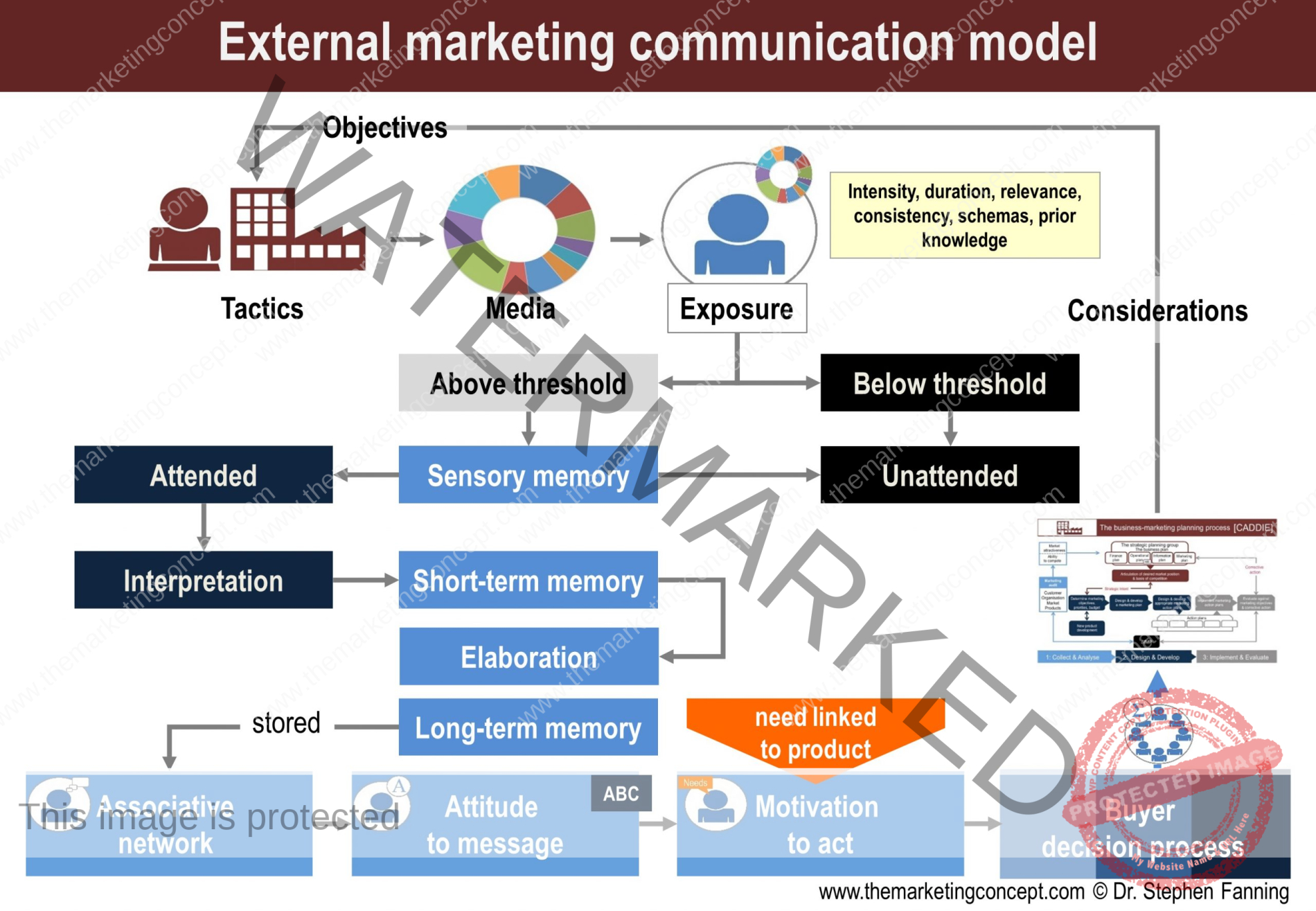
To stay above or below the threshold
Sometimes it is better for a message to be below the threshold. For example, a private equity company buys a well-run and respected business then it would be best to stay below the threshold. If the business was poorly managed, then “under fresh management” and “watch out for the changes” would be above the threshold – and appropriate. The following photograph demonstrates how Unilever are repositioning [over many years] one of their brands using a technique known as “just noticeable difference.” In this case, it is their ice cream brand which a few years ago, had many different brand names, brandmarks, colours and fonts. This would be expensive to have different messages around the world. The rebranding process is not yet complete; the process is outlined on Unilever’s web site and worth a read.
